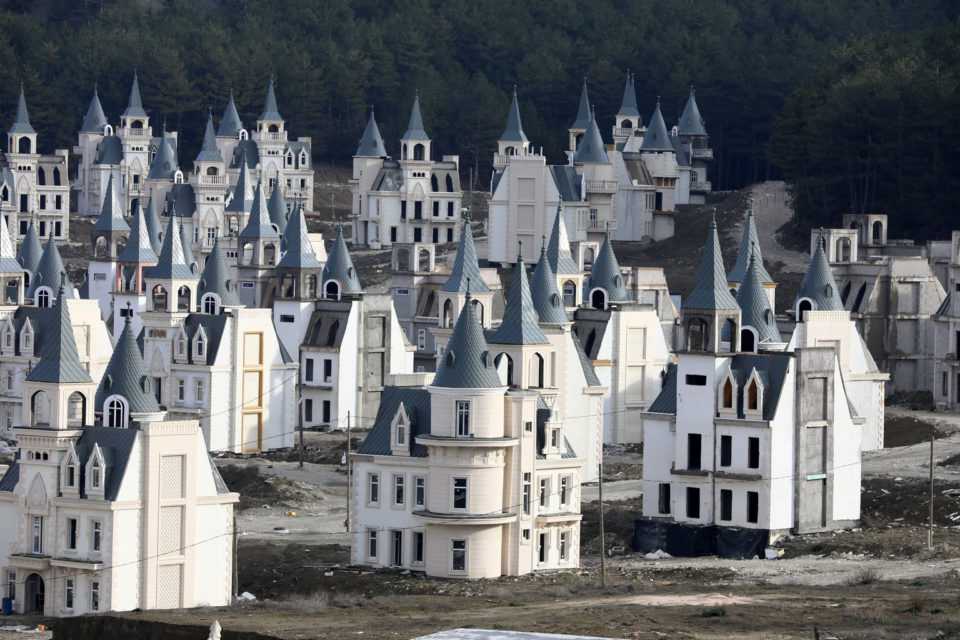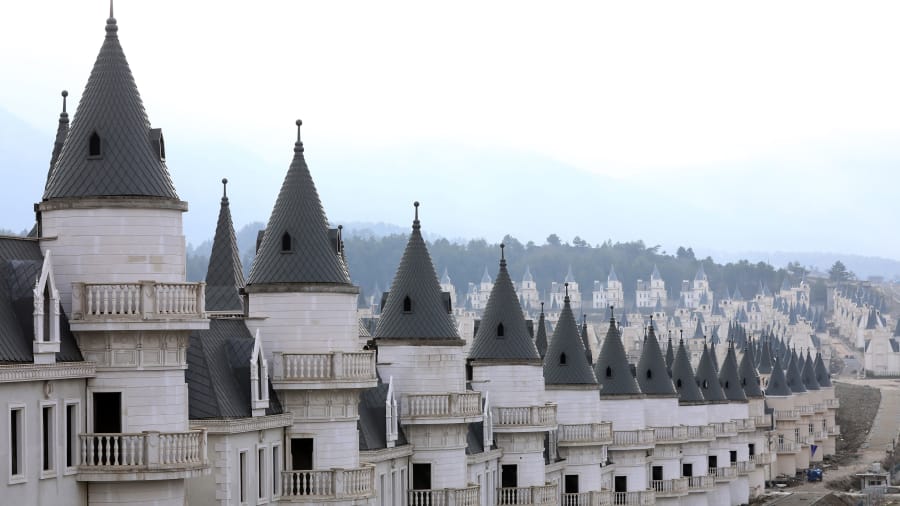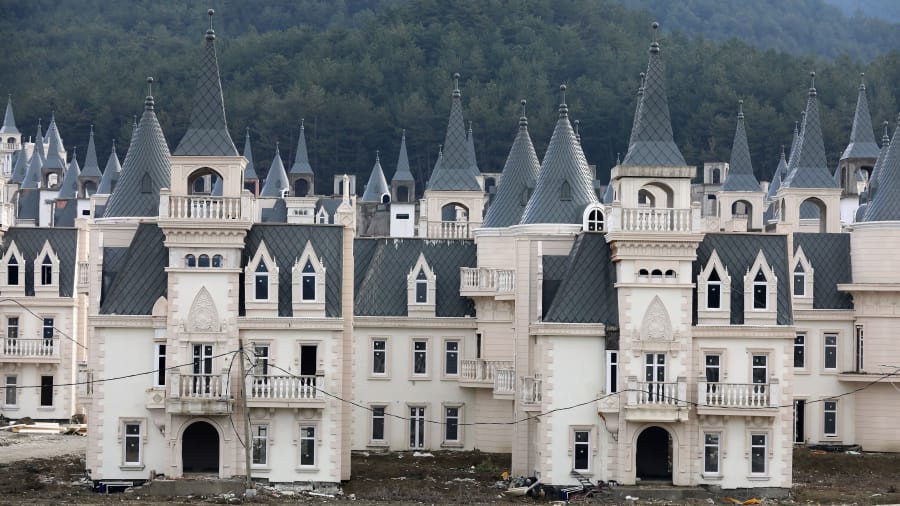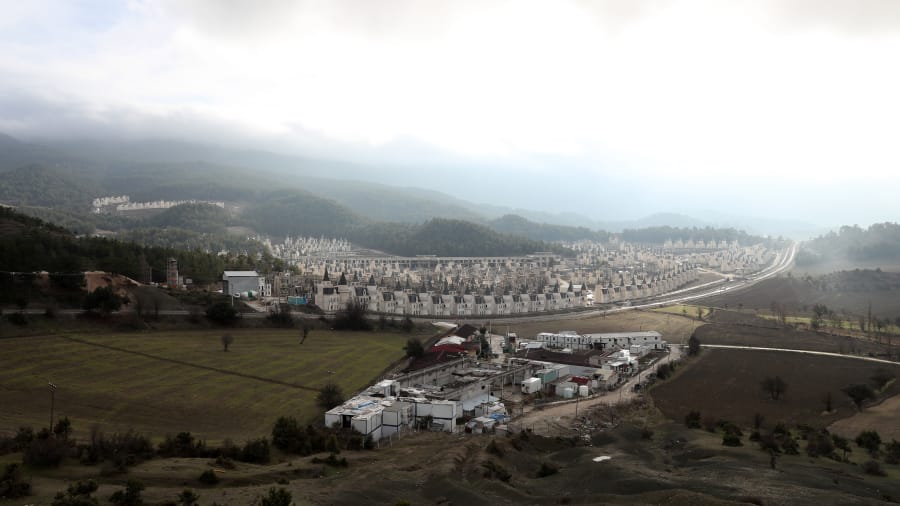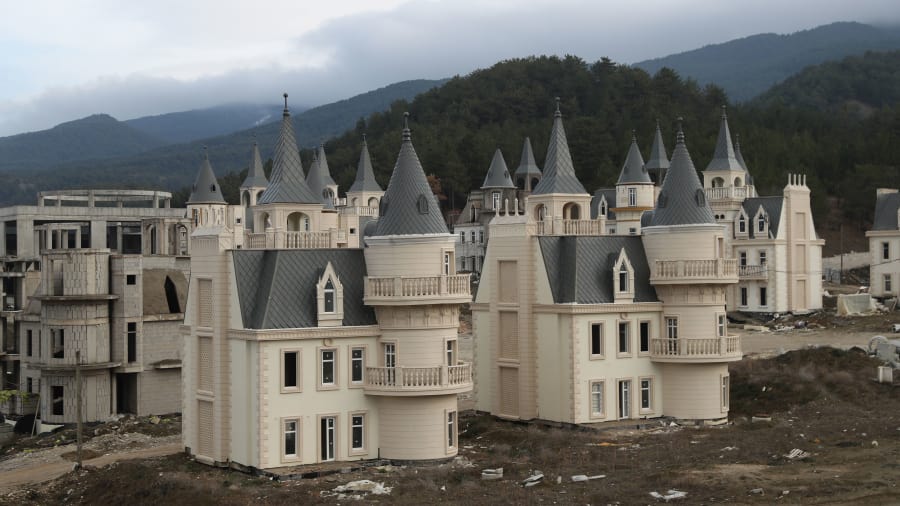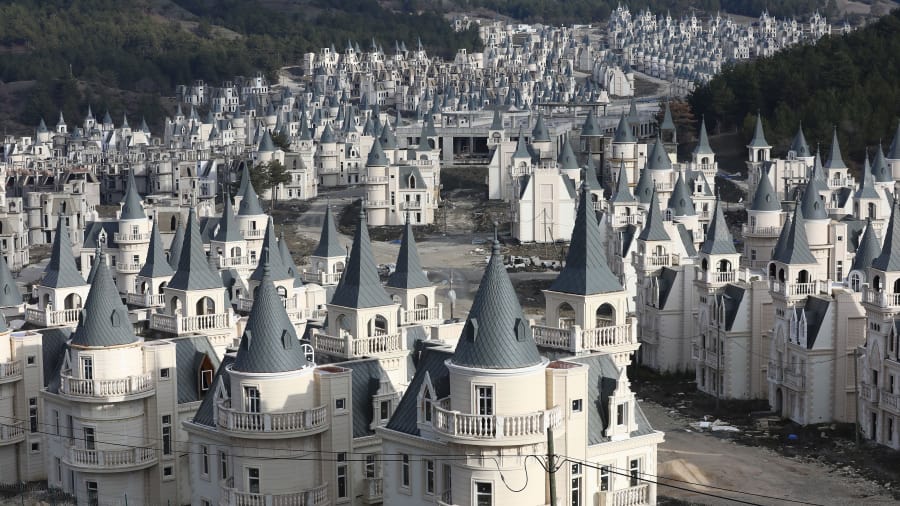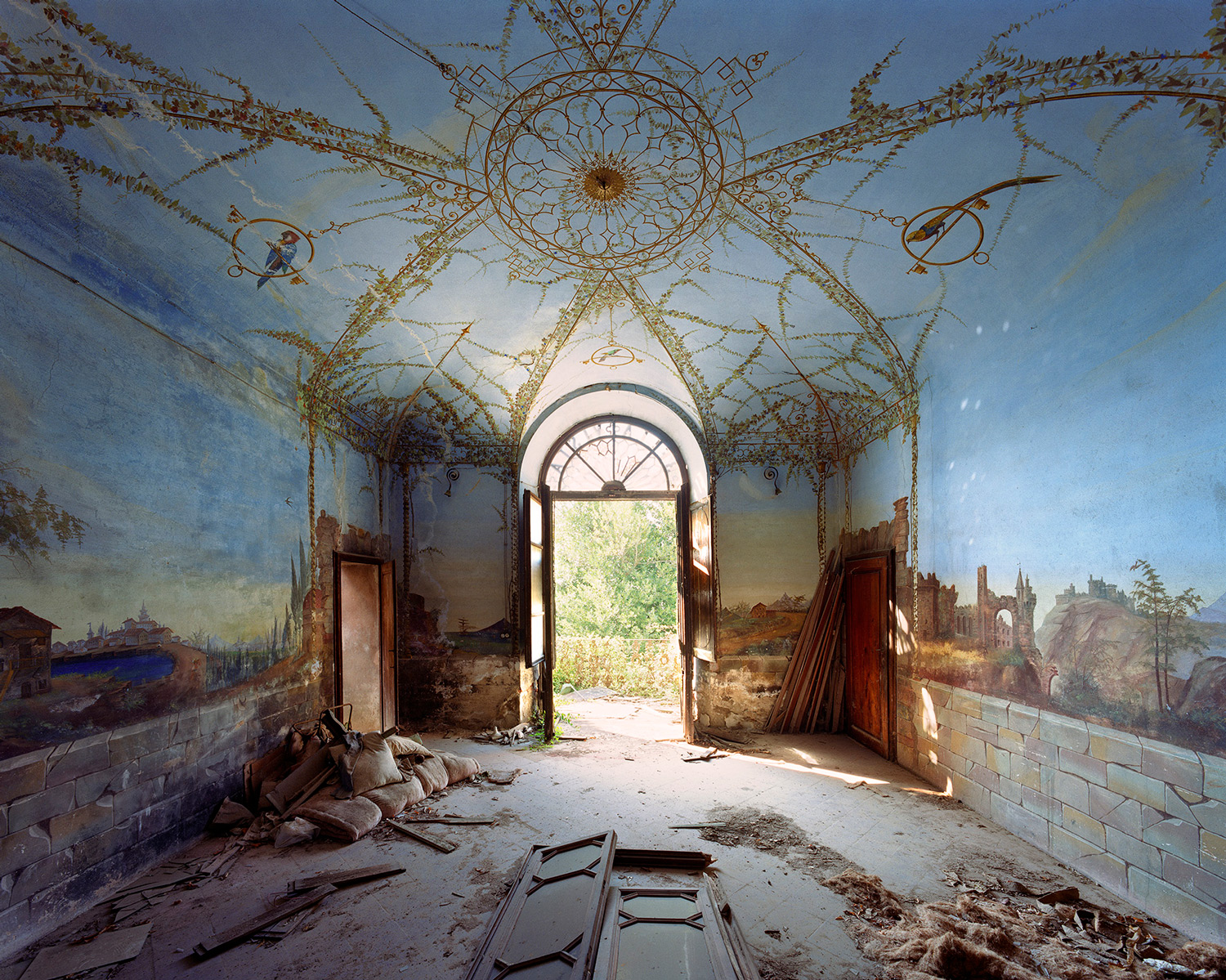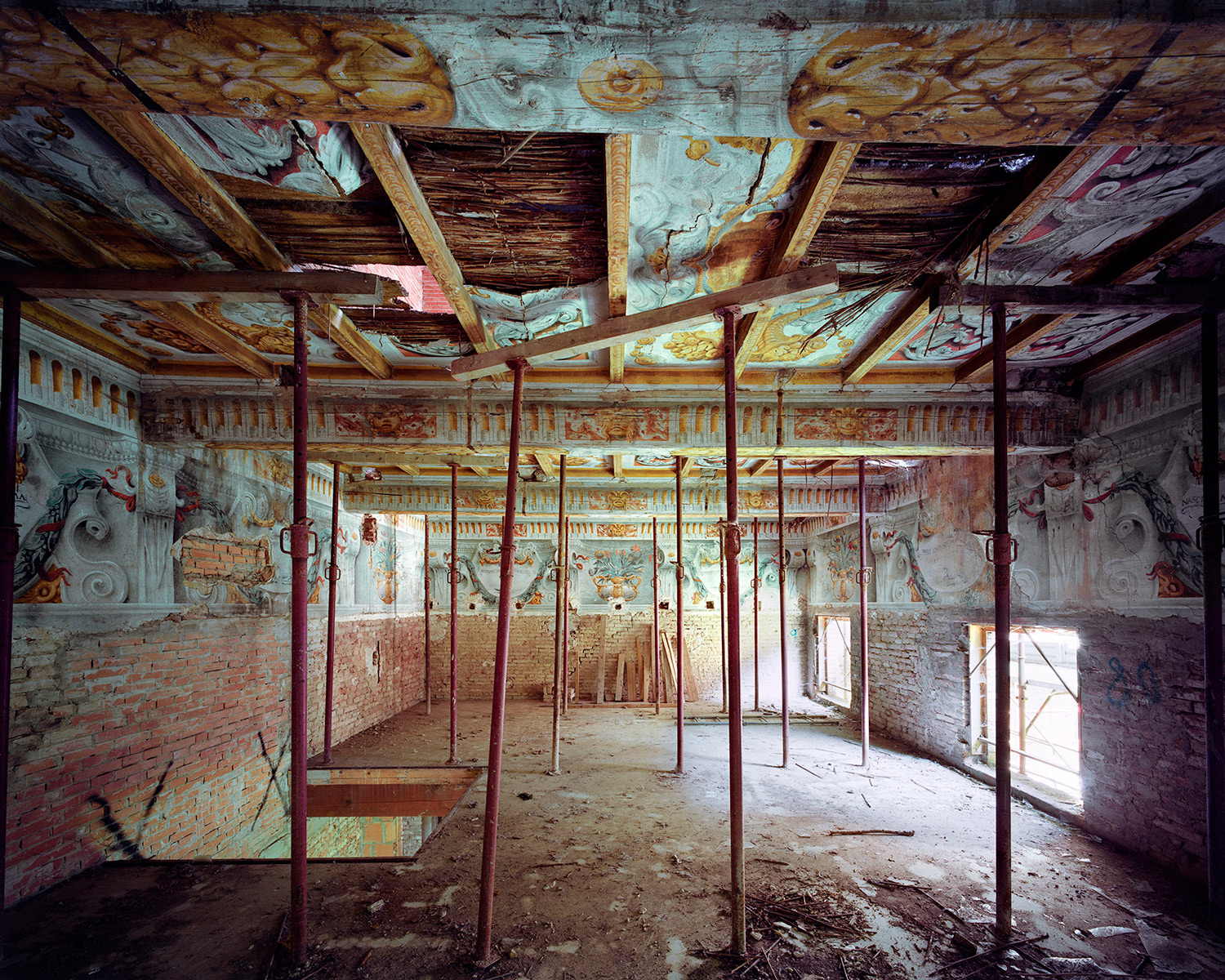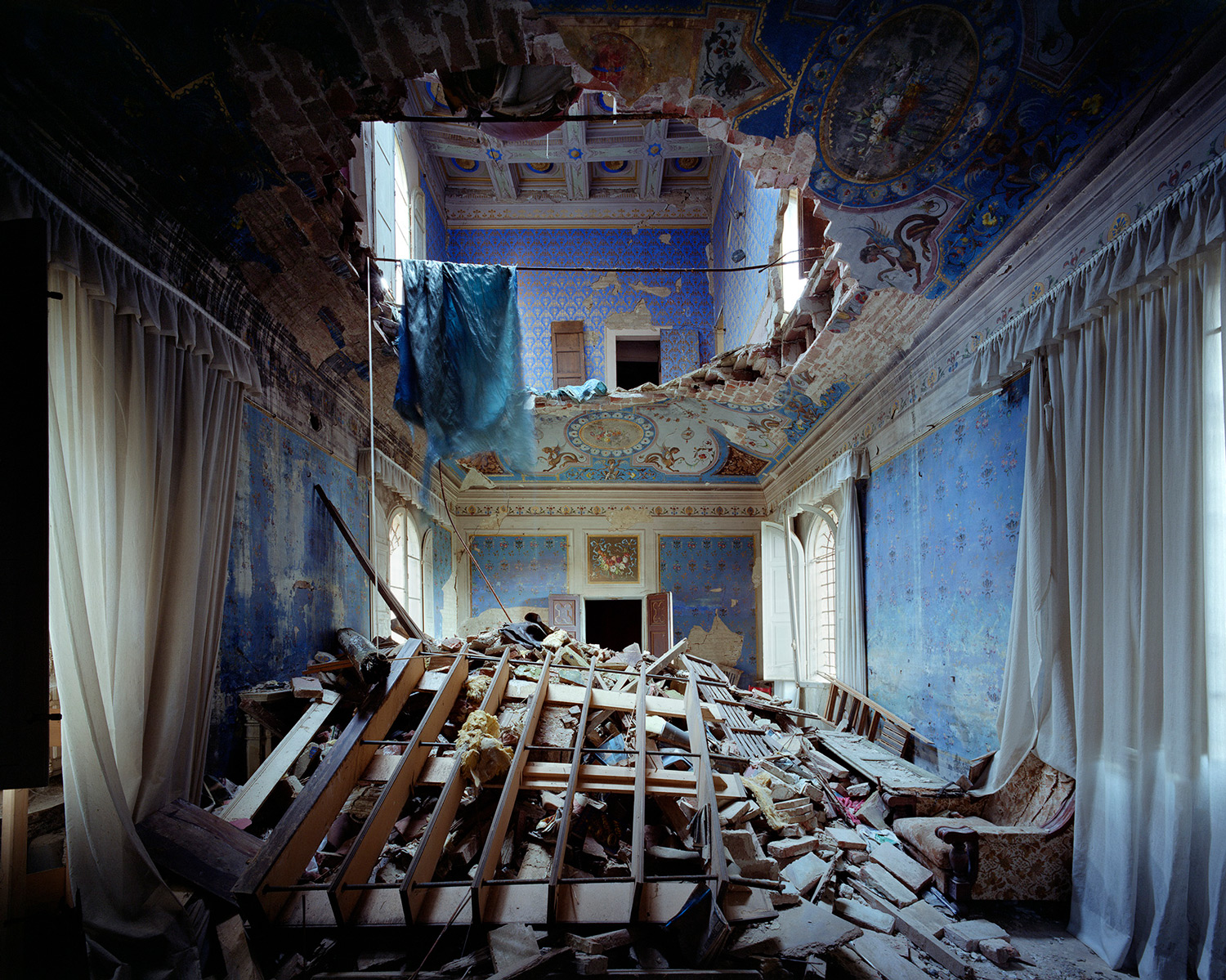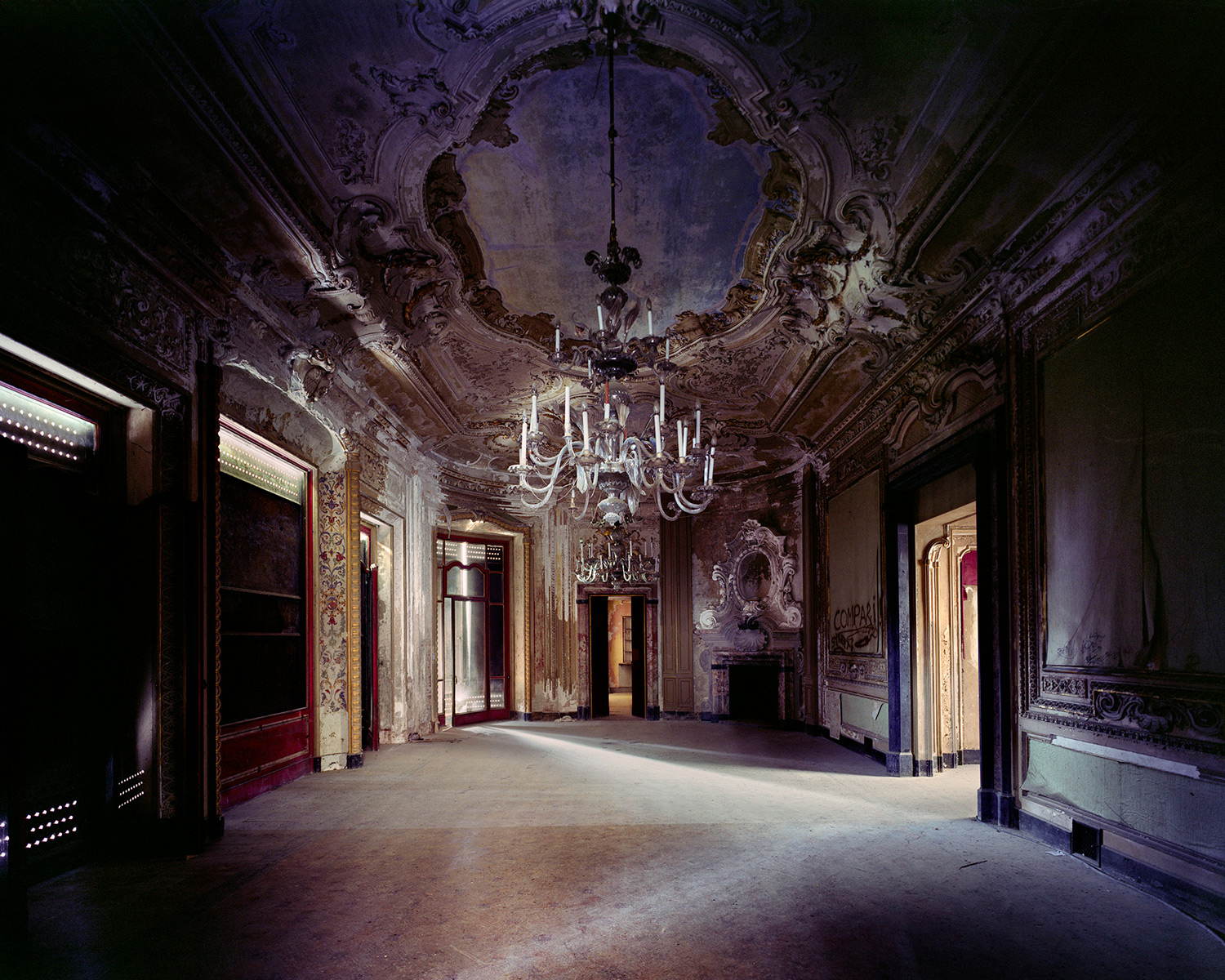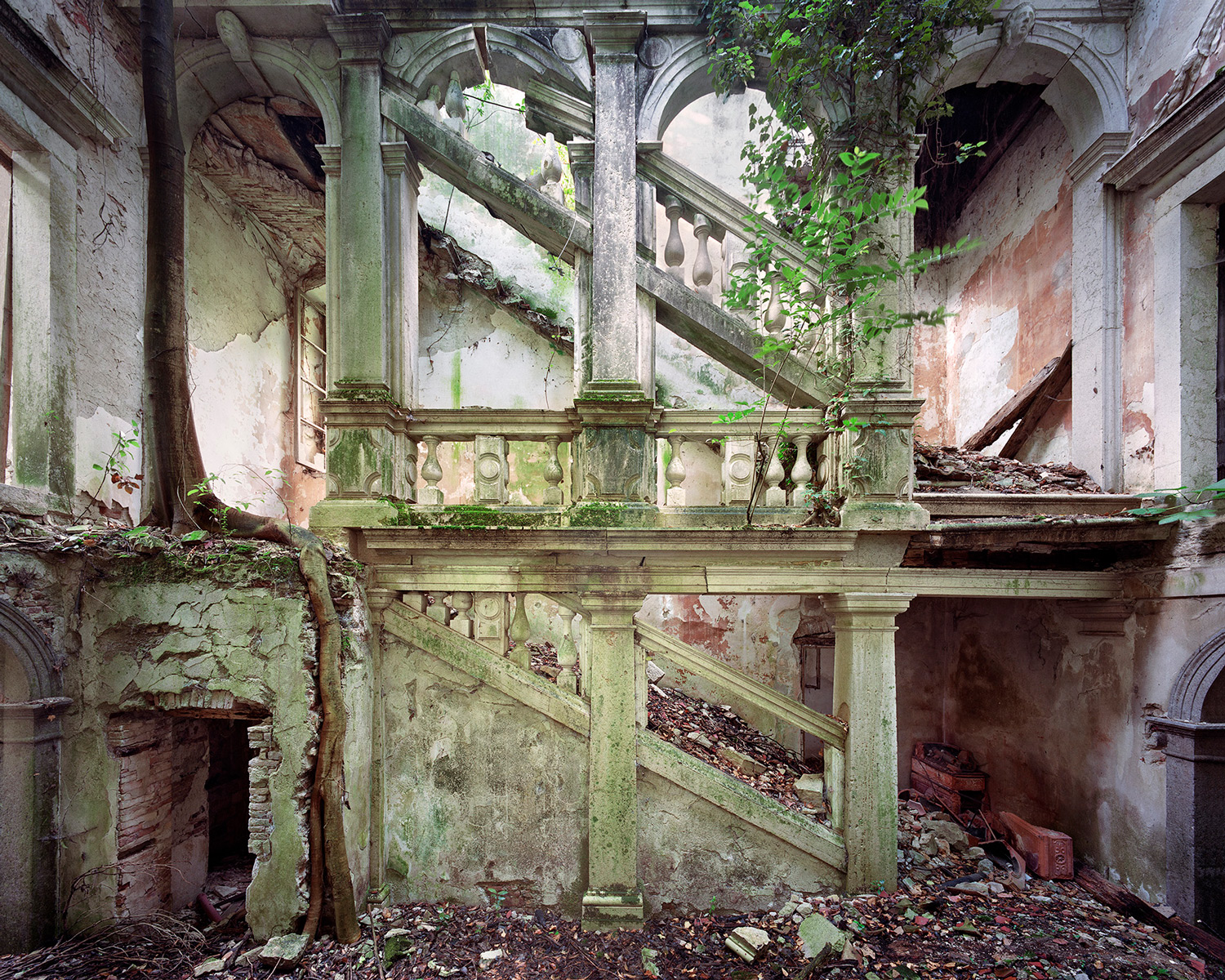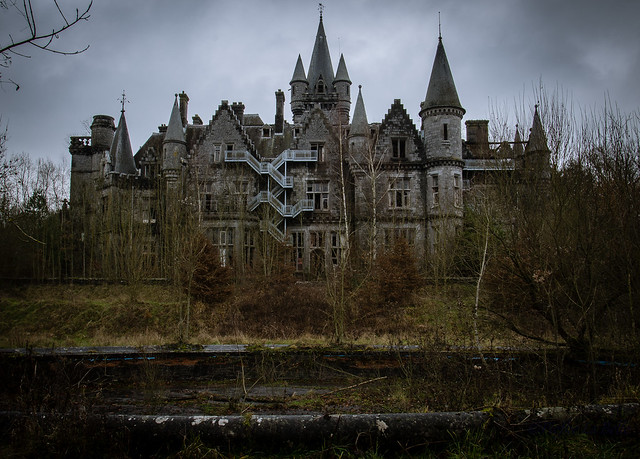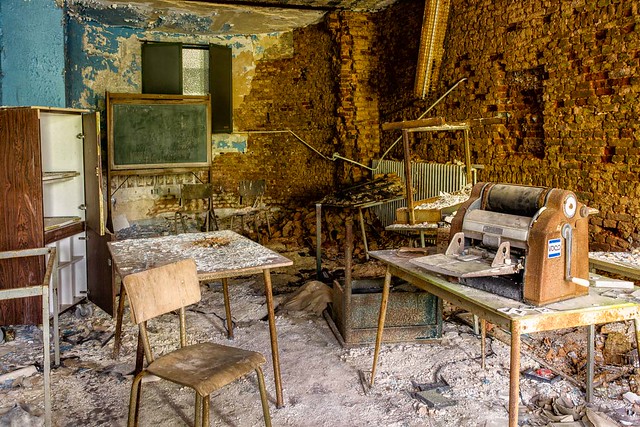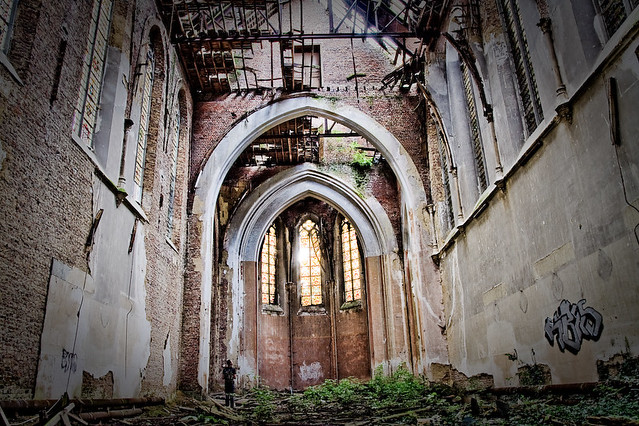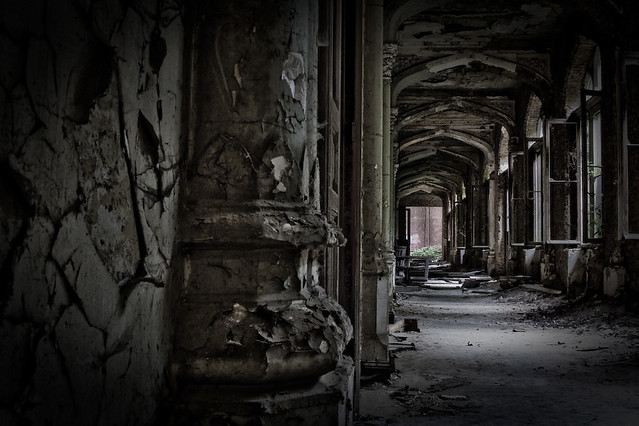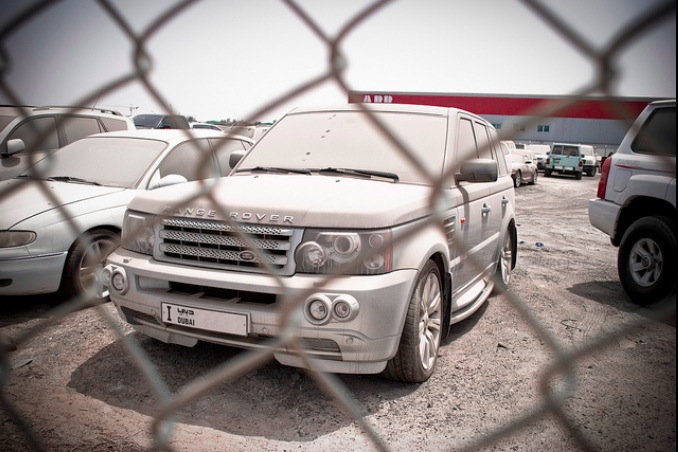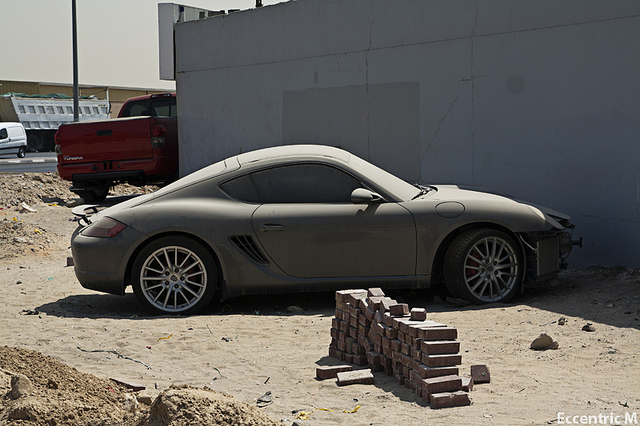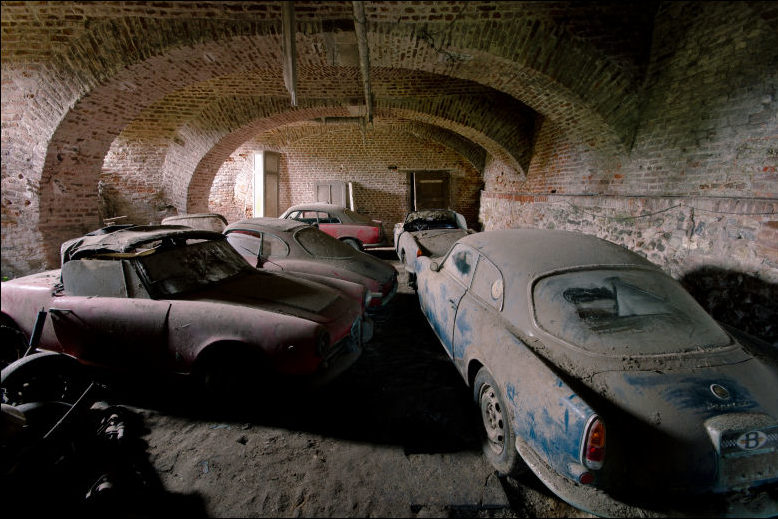There’s something about the contrast of opulent ornamentation and expensive materials with rot and deterioration that makes luxury resorts and mansions some of the most fascinating abandonments. Someone once cared about these places so much, they invested untold sums of money and hours of labor into them, perhaps having their walls hand-painted with frescoes or calling in master craftspeople to apply the finishing touches.
But nothing lasts forever, and neglect has the same effect on high end structures as it does on those more humble. Different viewers may look at them with sadness or schadenfreude, thinking about the larger context of human impermanence or just the potential wasted, but either way, we can’t help but look.
For many people, those feelings came into play this week as photos emerged of an eerie abandoned complex of castle-like mansions in Turkey. About halfway complete, the $200 million complex of fake chateaus modeled after historic European architecture is in limbo after economic uncertainty led large numbers of buyers and investors to pull out of the project. The developers don’t have enough funds to keep going, and though they say they’ll find a way to move the Burj al Babas development forward by the end of the year, it’s unclear whether that will actually happen.
Mocking commenters across the internet note not only the Disney-like quality of the $400,000 houses but how closely spaced they are. Row after row of identical Cinderella McMansions swirl through the valley, all sitting empty, many with gaping maws where their doors and windows should be. But while this is a particularly eye-catching example of stalled luxury development, it’s never been occupied, leaving it empty in another sense. The ghostly echoes of the lives that were lived in abandoned places, the hopes and dreams that their remains represent, are what lend them emotional weight.
Echoes of Past Promise
French photographer Thomas Jorion captures this particular quality of abandoned mansions and palaces throughout Italy in his series “Veduta,” which is on display at Esther Woerdehoff Galerie in Paris through April 6, 2019.
Each photograph depicts a real mansion – not a facsimile of one – still decked out in traditional Italian finery despite its considerably lowered circumstances. There are no background stories given for what happened to these beautiful villas, why they’ve fallen into disrepair; it could be that the cost of restoration is too high for most buyers, or the locations are inconvenient, or any number of other things. These places feel frozen in time, records of an era that has passed or perhaps an empire in the midst of falling.
Belgium seems to be brimming with abandoned castles, perhaps due to the simple fact that the country is full of historic architecture that’s difficult and expensive to maintain. Château Miranda, also known as Château de Noisy, stood as a stunning example of ornate abandonments before its demolition in 2017.
The 19th-century neo-Gothic castle in Celles was occupied by German forces during World War II and later became an orphanage and a “holiday camp for sickly children” before it was abandoned in 1991. Mesen Castle in Lede has a similar story. Purchased by a Catholic institution after the noble family that commissioned it died out, it became a boarding school for girls before its abandonment in 1970. It was destroyed in 2011.
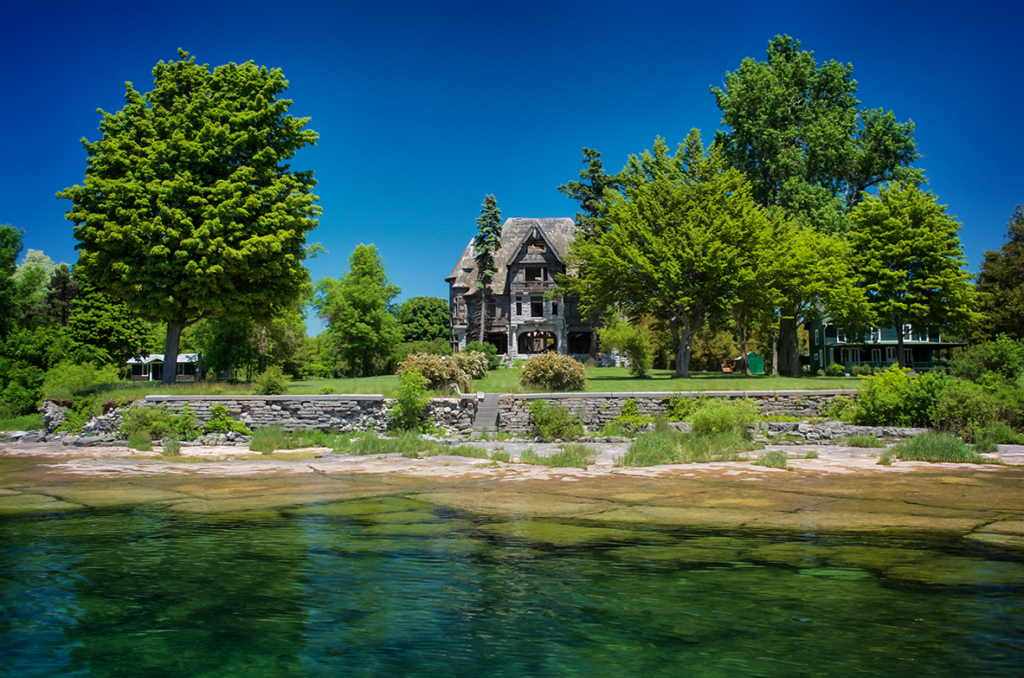
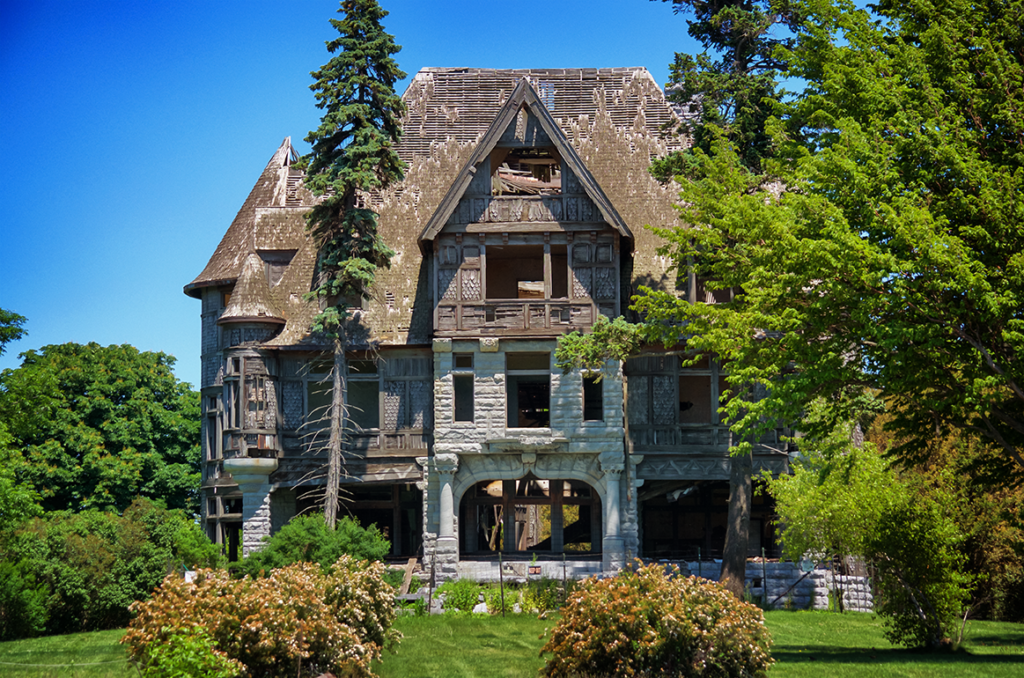
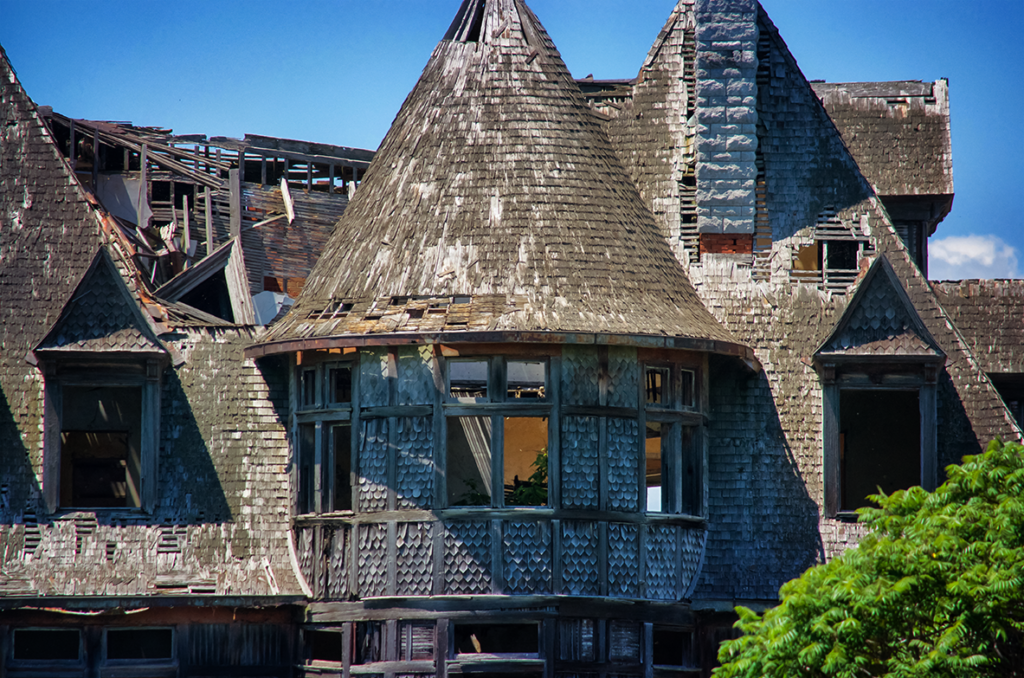
North America has some abandoned castle-like structures of its own, including a once-beautiful mansion that now looks like the perfect setting for Netflix’s next gothic horror series. The villa on Carleton Island in Cape Vincent, New York has been unoccupied for over 70 years, and it has deteriorated to the point of serious safety concerns.
Businessman William O. Wyckoff commissioned the mansion in 1890 and promptly died of a heart attack on his first night there; his wife had passed away a month prior. Though the house was passed on to his sons, the family seems to have lost its fortune during the Great Depression, and the property was abandoned. The current owners live in a nearby cottage, putting it on the market every few years with no luck. One potential buyer estimated that it would cost up to $12 million to rebuild.
Remains of Wasted Wealth

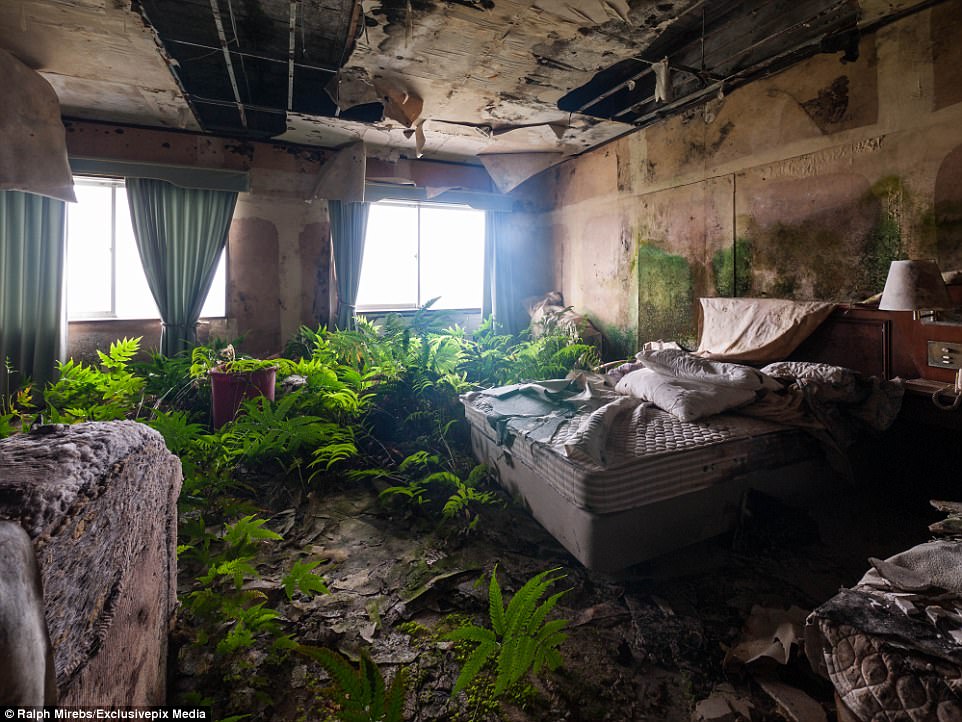
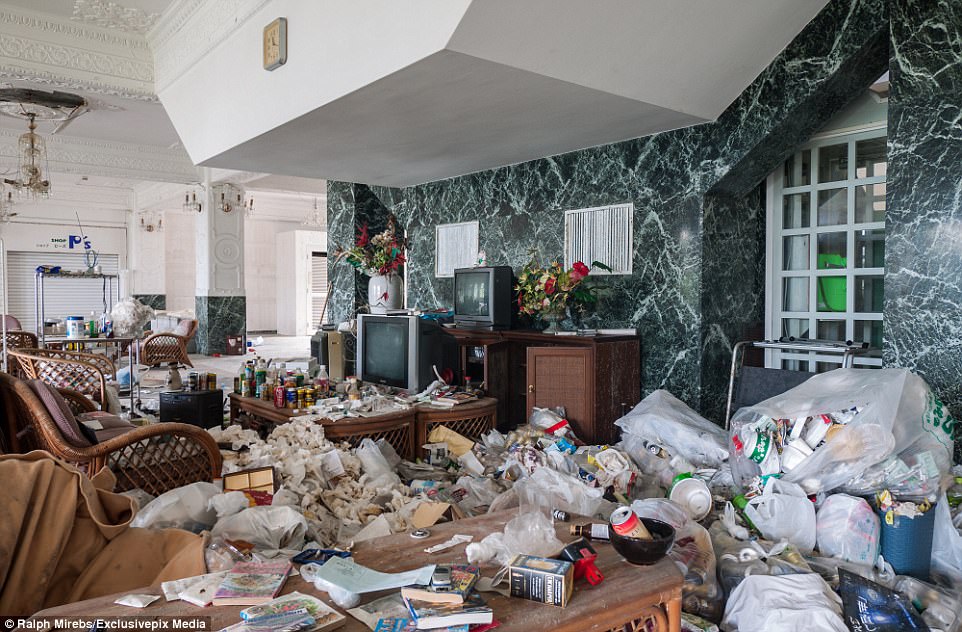
Built in 1963, Japan’s Hachijo Royal Hotel quickly became a popular destination for wealthy Japanese natives looking for a quick and easy weekend getaway. At the time, passports were hard to acquire, keeping a lot of travel limited to domestic destinations. Set on a volcanic island just a short ferry ride from the mainland, the hotel offered luxe accommodations in a beautiful hillside setting the Japanese government promoted as “The Hawaii of Japan.”
But as soon as international travel became more accessible, Japanese tourists began leaving the country for new adventures, and the hotel languished. It was abruptly abandoned in 2006, and the ensuing years have been brutal. Nearly everything remains exactly as it was then: towels draped over the edges of the tubs, toys in the play rooms, offices full of outdated electronics. Many of the rooms have been invaded by ferns and moss.
Known for its constant frenzy of construction, innovation and over-the-top spending, Dubai has its fair share of arrested developments. But one of the weirder displays of seemingly casual extravagance is the country’s high number of abandoned luxury vehicles. Some of the world’s most expensive cars are little more than street litter here, collecting dust curbside or in parking garages.
But this particular millionaire habit isn’t quite as it appears. Though some might truly be cast aside by owners too rich to care, many are abandoned by owners who bought them during a boom but can no longer afford them. In Dubai, bouncing a check or failing to pay back debt is a criminal offense, so it’s likely that formerly wealthy expats dumped the cars and then high-tailed it back home.
Back in Belgium, urban explorers hit the motherlode when they entered the grounds of the Kasteel van Heers a 13th century castle near Brussels that fell into decay when the descendants of its original owners couldn’t afford to maintain it.
The castle and all its contents were seized by the Flemish government in 2007, but somehow they missed a collection of six 1060s Alfa Romeo sports cars held within a dusty basement – including a rare and extra-valuable prototype. They were all sold at auction in 2015. Kind of makes you wonder what else dusty castles around the world might be hiding, doesn’t it?
If all of this waste makes you wish you could save an abandoned mansion, the governments of several countries would like to assist you with that venture. Italy is giving away over 100 historic castles and villas for free as long as the new owners can produce concrete plans for renovating the sites to help boost tourism to their local villages, and rural Japanese towns are so desperate for residents they’re giving away abandoned houses. In France, you can “adopt a chateau” without becoming solely responsible for its upkeep through a collective effort to preserve neglected structures with historic value.
